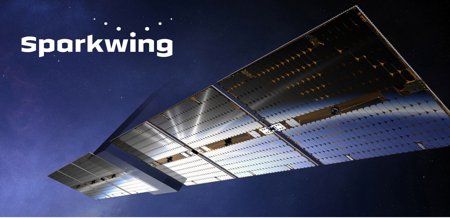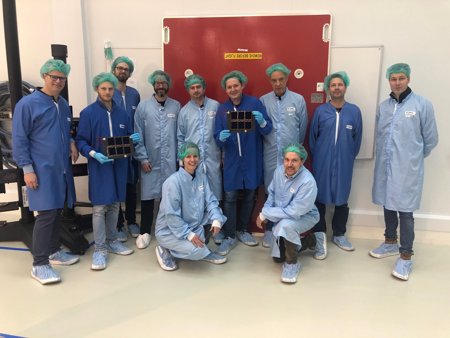Dutch innovation Sparkwing creates opportunities on the global market for small satellites
Space is developing rapidly as a global commercial market and it is no longer the exclusive domain of space agencies. The Netherlands has the necessary qualities to play a substantial role in the growth market for space in the future as well.
How does the NSO ensure that those future opportunities actually arise and are capitalised on? The answer: by supporting promising innovations during a crucial phase with one of its innovation schemes. Sometimes, that support is needed in order to e.g. take the final step towards the market.
This is what will allow the Belgian company Aerospacelab to launch a small earth-observation satellite in a few years’ time that will be powered by a new generation of solar panels from the Netherlands. This makes the company the launching customer of Sparkwing, an innovative product developed by Airbus Defence and Space Netherlands from Leiden, with a final push towards the market provided by the NSO. The contract between Aerospacelab and Airbus Defense and Space was signed last month. An untapped market awaits.
The size of a washing machine
Sparkwing. | Source: Sparkwing
Sparkwing offers a range of solar panels for smallsats; satellites the size of a washing machine that weight between one and five hundred kilos. The company's offerings consist of more than thirty different panel sizes for satellite wings with one, two or three solar panels per wing. Per satellite, this will generate anywhere from one hundred to a maximum of two thousand Watts of energy.
These are standardised, commercial solar panels for smallsats that can be ordered online and are ready for delivery in a matter of months. It is a global first and a disruptive business model, says Marloes van Put, programme manager at Sparkwing: “We have made a name for ourselves by developing custom-made solar panels for specific satellite missions. Now, we are taking the opposite approach as well: with Sparkwing, we offer a range of standard configurations that clients can integrate into their satellite design.”
Technological innovations
The Leiden branch of Airbus has forty years of experience with designing and developing solar panels. Nevertheless, the development of the Sparkwing range presented the company with a number of technological challenges. The panels had to be simpler than their predecessors and their design had to be simplified to make large-scale production possible. They are thinner, contain smaller mechanisms and function without a dampening and synchronisation system when they are unfolded in space. This was all done to keep the costs as low as possible, which is critical in the market for small satellites.

The team. | Source: Sparkwing
To make all these innovations possible, Airbus called on the ESA ARTES programme via the NSO in 2019. This programme is specifically dedicated to the development of innovative technology for commercial space applications. Bert Meijvogel of the NSO: “With the ARTES funding, we help Dutch businesses that dare to take risks in their development of new and promising technology. If that development is successful, it not only benefits the company itself, but also an entire ecosystem of - often Dutch - suppliers.”
Meijvogel says the Sparkwing concept is a perfect match for the NSO's ESA ARTES programme: “This technology improves the position of Dutch space companies in the emerging market of small satellites. The fact that there is already a market demand for Sparkwing's products is a very good sign.”
Hundreds of Sparkwings
Aerospacelab is the first Sparkwing client, but many more are expected to follow. Van Put: “A Euroconsult study predicts that several thousand satellites will be launched in the next decade that can be powered by Sparkwings. Who knows? In the future, it may even be possible to equip megaconstellations with our panels. Then there wouldn't be dozens but hundreds of satellites equipped with our new Dutch solar panels.”
Links: